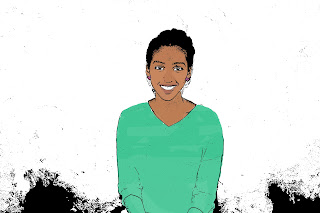Thursday, December 20, 2012
Monday, December 10, 2012
Tuesday, December 4, 2012
Monday, November 26, 2012
Macro Photography
Macro photography is extreme close-up photography usually of very small subjects in which the size of the subject is greater than life-size.
Thursday, November 15, 2012
Metadata Definition
Metadata describes how and when and and how and by whom a particular set of data was collected as well as how it was formatted.
Tuesday, November 13, 2012
Thursday, November 8, 2012
Friday, November 2, 2012
Tuesday, October 23, 2012
Friday, October 19, 2012
Triangle of Exposure
ISO- a digital scale that determines the photographic film's sensitivity to light
Shutter Speed - The speed at which a camera's shutter opens and closes, bringing in more or less light.
Aperture - a hole in the camera that opens and closes, changing the amount of light that gets into the photo
Depth of Field - the range of the image that remains sharp and clear
Motion Blur - the apparent streaking of rapidly moving objects in a still image
Noise and Light Sensitivity - The lower the sensitivity, the finer the grain and the more light that is needed.
Shutter Speed - The speed at which a camera's shutter opens and closes, bringing in more or less light.
Aperture - a hole in the camera that opens and closes, changing the amount of light that gets into the photo
Depth of Field - the range of the image that remains sharp and clear
Motion Blur - the apparent streaking of rapidly moving objects in a still image
Noise and Light Sensitivity - The lower the sensitivity, the finer the grain and the more light that is needed.
Thursday, October 11, 2012
Monday, October 8, 2012
Print Vs. Digital Bibliography
Dee, Ronni. "Pros & Cons of Digital Cameras." EHow. Demand Media, 25 Feb. 2009. Web. 08 Oct. 2012. <http://www.ehow.com/facts_4814965_pros-cons-digital-cameras.html>.
"Digital Camera Vs. Film – Pros And Cons." PictureCorrect Photography Tips. N.p., n.d. Web. 08 Oct. 2012. <http://www.picturecorrect.com/tips/digital-camera-vs-film-pros-and-cons/>.
"Film vs. Digital." Film vs. Digital. N.p., n.d. Web. 08 Oct. 2012. <http://digital-photography-school.com/film-vs-digital>.
"Pros And Cons Of Digital Photography, Part Oneby Stan P. Cox II." Pros And Cons Of Digital Photography, Part One. Article by Stan P. Cox II. N.p., n.d. Web. 08 Oct. 2012. <http://www.callofthewildphoto.com/articles/digital-photography-pros-cons-1.html>.
Tuesday, October 2, 2012
Print Versus Digital Photography
Positives of Print Photography:
1. The photographer puts more thought into each photograph because there are only a limited number of pictures that they can take.
2. The black-and-white photos turn out with more detail than when taken with a digital camera.
3. Film cameras are more durable and can be used for decades to come.
4. Mistakes made when taking photos with a film camera can actually make the photo better and authentic.
5. Film is just as high if not higher in resolution compared with digital.
Negatives of Print Photography:
1. The camera body is very heavy.
2. A blackroom is needed to develop photos.
3. You can only take a limited amount of photos.
4. You have to wait until the photos are developed before you can tell if it was a successful shot or not.
5. There are a lot of mistakes to be made. Ex. You cannot copen the camera when the film is in, and you have to be careful of light exposure to film.
Positives of Digital Photography:
1. You can a lot of pictures on one memory card.
2. You can change the film speed on each photo.
3. You get immediate access to photos taken.
4. Easy ability to use built in filters. Ex. landscapes, portraits...
5. The editing is very easy using Photoshop and other softwares.
Negatives of Digital Photography:
1. Easy to lose detail in Digital Photo's.
2. Higher initial cost.
3. Less durable and can easily be damaged.
4. Battery life for digital cameras is much shorter.
5. Complex and can be difficult to use for some.
1. The photographer puts more thought into each photograph because there are only a limited number of pictures that they can take.
2. The black-and-white photos turn out with more detail than when taken with a digital camera.
3. Film cameras are more durable and can be used for decades to come.
4. Mistakes made when taking photos with a film camera can actually make the photo better and authentic.
5. Film is just as high if not higher in resolution compared with digital.
Negatives of Print Photography:
1. The camera body is very heavy.
2. A blackroom is needed to develop photos.
3. You can only take a limited amount of photos.
4. You have to wait until the photos are developed before you can tell if it was a successful shot or not.
5. There are a lot of mistakes to be made. Ex. You cannot copen the camera when the film is in, and you have to be careful of light exposure to film.
Positives of Digital Photography:
1. You can a lot of pictures on one memory card.
2. You can change the film speed on each photo.
3. You get immediate access to photos taken.
4. Easy ability to use built in filters. Ex. landscapes, portraits...
5. The editing is very easy using Photoshop and other softwares.
Negatives of Digital Photography:
1. Easy to lose detail in Digital Photo's.
2. Higher initial cost.
3. Less durable and can easily be damaged.
4. Battery life for digital cameras is much shorter.
5. Complex and can be difficult to use for some.
Friday, September 28, 2012
Wednesday, September 26, 2012
Monday, September 24, 2012
Wednesday, September 12, 2012
Sunday, September 9, 2012
Subscribe to:
Comments (Atom)




















